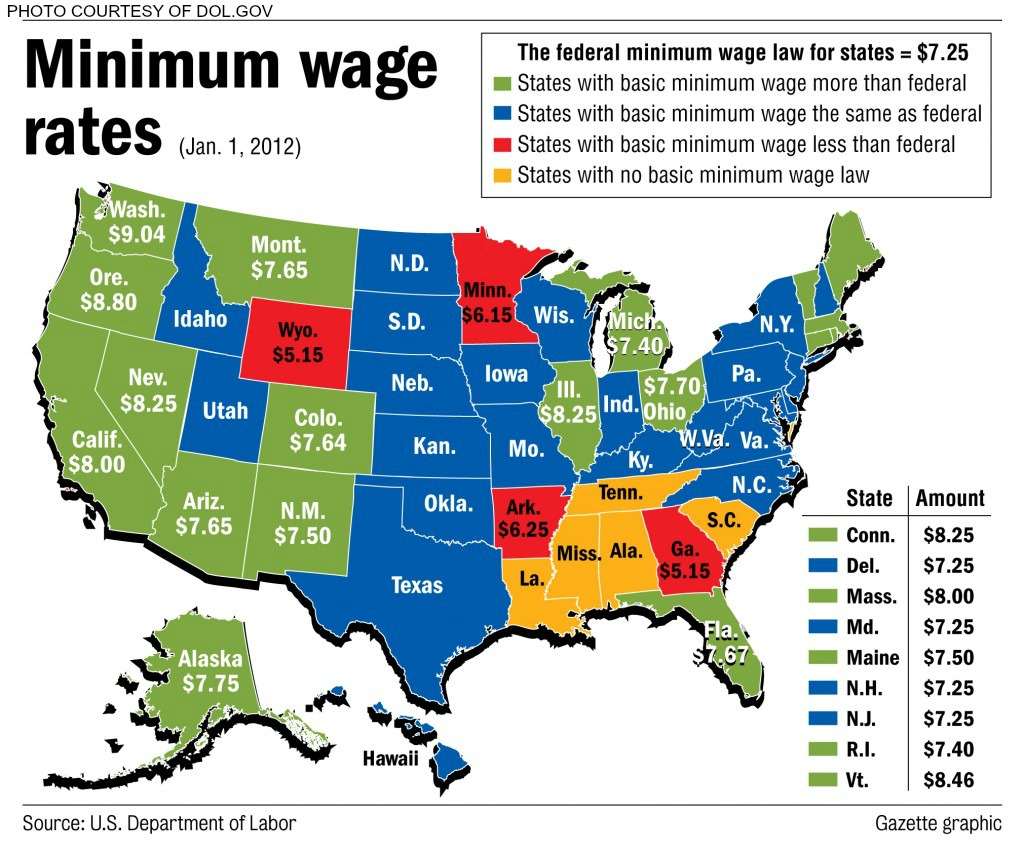Across the nation, minimum wage workers are all fighting for a raise.
Today, there are over 28 million citizens working for minimum wage. Many of these workers are protesting for a raise from the standard $7.25 an hour to $10.10 an hour. Several states towards to the north and the west have already begun to raise minimum wage.
In 1938, when the minimum wage began to be enforced, money was worth more and provided more buying power. In 1968, the minimum wage reached an all time high at $1.60 (which would be equivalent to $10.86 today due to inflation).
Since Congress did not adjust for inflation over time, value and buying power of money has drastically decreased over the years.
.
Today’s minimum wage would only be worth $1.06 in 1968. Back then, a new car cost on average $2,822. This would mean that at the current minimum wage you would have to work about 2662 hours to pay off the car. Today’s average price for a new car is $32,086. this means that at today’s minimum wage it would take 4425 hours to pay it off.
“The prices [in the restaurant] would be forced to increase because of the increase in payroll cost,” said Tony Henson, a manager at a local Chick-Fil-A. “You would almost see an immediate increase in cost of food purchased as well as a downsizing of employment.”
Henson stated that people should be making a “fair wage to live on”, but pay increases should be based on “merit and performance”.
This local Chick-Fil-A is known for hiring local teens from high schools such as Sanderson, Millbrook and Leesville.
Teenagers would be greatly affected by an increase in the minimum wage. Many would be out of a job since companies want more experienced and skilled adults. Currently, the teen unemployment rate is almost triple the national unemployment rate.
Here in North Carolina, the current teen unemployment rate, according to govering.com, is about 18.8% for teens ages 16-24.
A majority of minimum wage workers are teens, but if the minimum wage is increased then adults will make up the majority of minimum wage workers. This is because there will a lower demand for teens with little to no working experience. Companies will want to hire adults who need the job to support themselves or support their family.
Many believe that an increasing the minimum wage would bring a lot of people and families out of poverty. This is only partially true because an increase in wages would only decrease the number of people in poverty by about 900,000 people as stated by Chad Halvorson in his article on the pros and cons of raising the minimum wage as stated on A small portion of the 16.5 million that would supposedly benefit from the increase. This is because very few minimum wage workers are actually in poverty.
Of the families living in poverty, only 7% have a full-time worker in the family. This means that those in poverty are either not working, or are not working enough.
There may also be an alternate solution to reducing the number of citizens in poverty. The theory is that if the nation increases the number of available jobs instead of increasing the minimum wage, then that would bring a larger portion of people out of poverty.
But there are pros to raising the minimum wage. An increase would lead to economic stimulus. Since minimum wage workers are making more, they have more to spend. Also, an increase in the minimum wage would compensate for inflation which rises every year, but wages have only been increased three times in the past decade.
An increase in wages would also lead to more consumer spending, meaning more money in the local economy.
The plan to increase the minimum wage is still under discussion, but there is no clear solution the minimum wage debate.

Leave a Reply